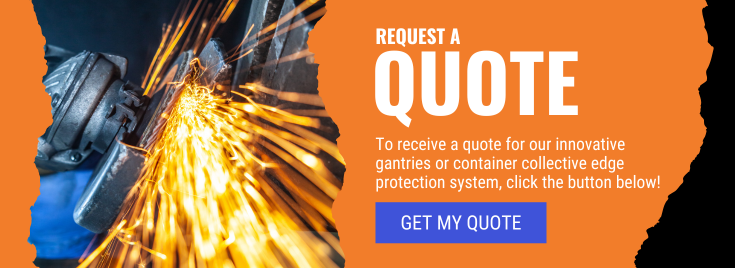Signs You Need To Replace Your Current Gantry System
As durable as industrial gantry systems are, like any equipment, eventually they will need replacing, and there are several signs that it may be worthwhile replacing your current gantry system sooner rather than later. A gantry system is a valuable asset for any business that deals with heavy loads, supporting the movement and positioning of goods in various applications. There are, however, worrying safety implications for a gantry system that is damaged or unsuitable for its application.

In this article, we’ll discuss the top five signs that tell you it’s time for a new gantry system:
1) Structural Damage
The first sign that you need a new gantry system is when you observe significant damage to its structure. Such damage could be in the form of bent beams, the A-frame/vertical legs, or corroded components, etc. When the system's integrity is compromised, it can be dangerous to continue using it, and you should invest in a new system immediately. Structural damage can also cause issues with the load-bearing capacity or undermine the system's overall stability; hence it is essential to assess any damage and replace the system if necessary. Unfortunately, by the time you notice structural damage, the gantry may have been compromised or unsafe for some time, so it’s advisable to implement regular inspections, pre-use checks, maintenance and correct storage to preserve safety and optimal working performance before it reaches this stage.
2) Excessive Wear And Tear
Heavy loads, regular operations, weather exposure, and incorrect handling and storage all inevitably contribute to wear and tear on a gantry system. If you notice that the wheels or bearings have become excessively worn out, for instance, or if you observe parts that have clearly been overused or stressed (hair-line fractures in metal or bracketry), it is an indication that the gantry is no longer reliable in its current state. It’s possible to repair or service a high-quality system to extend its working life by swapping out individual components, but eventually, the more cost-effective option is to consider a replacement.
3) Safety Non-compliance
Industrial gantry systems must comply with specific safety regulations, and failure to meet these can result in injuries, loss of life, or damage to property and goods. In the UK, these are covered by the Lifting Operations and Lifting Equipment Regulations 1998 (LOLER), which specifies, among other things, that equipment used for lifting should be ‘fit for purpose’ and appropriate for its task. If routine servicing and thorough examination (another LOLER requirement) reveals that your gantry system no longer meets baseline safety standards, it is essential to immediately replace it with a newer and safer system that complies with LOLER standards to maintain a safe working environment.
4) Changing Needs
The lifting requirements of businesses can evolve over time, so if your current gantry system no longer meets the needs of your team or is hindering productivity in some way, you may save time and money by replacing it, even if it is still structurally sound. For example, a portable gantry system that can be easily moved from one place to another may be a good asset for your team if you need to assemble and disassemble your current gantry in different locations repeatedly.
5) New Technological Advancements
As engineering techniques, materials, and technology advances, new and improved gantry systems become available, offering businesses faster and more efficient movement mechanisms and improved safety features. If your current gantry system is outdated, therefore, you may be missing out on new opportunities for productivity that could ease your operations and cut down on your expenses.
Innovative Lifting Gantry Systems From SHEARFORCE
SHEARFORCE manufacture an innovative range of lightweight portable gantries that can rotate, are suitable for daily use and in confined spaces and areas with restricted access. To find out more, please contact one of our experienced team today.

Image Source: Canva

